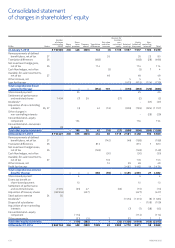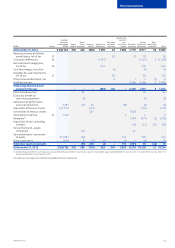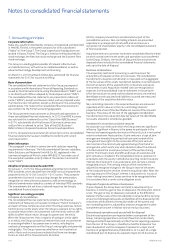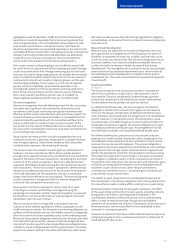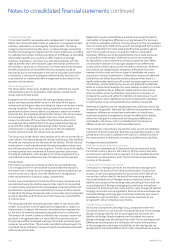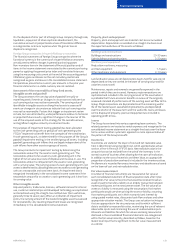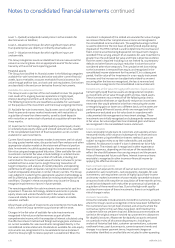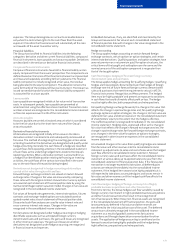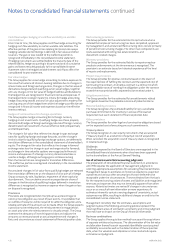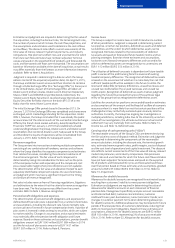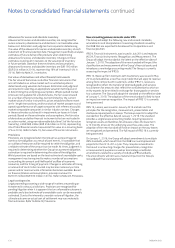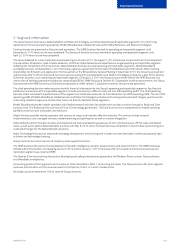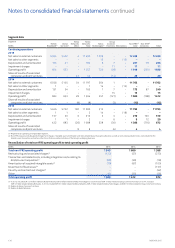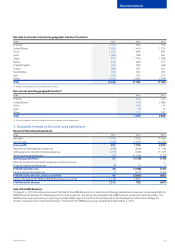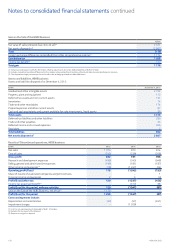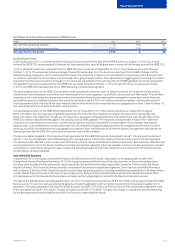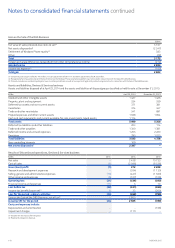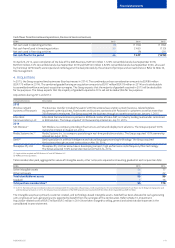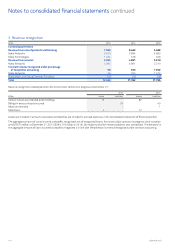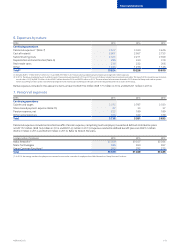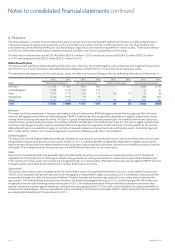Nokia 2015 Annual Report Download - page 136
Download and view the complete annual report
Please find page 136 of the 2015 Nokia annual report below. You can navigate through the pages in the report by either clicking on the pages listed below, or by using the keyword search tool below to find specific information within the annual report.134 NOKIA IN 2015
Allowances for excess and obsolete inventory
Allowances for excess and obsolete inventory are recognized for
excess amounts, obsolescence and declines in net realizable value
below cost. Estimation and judgment are required in determining
thevalue of the allowance for excess and obsolete inventory at each
statement of nancial position date. Management specically analyzes
estimates of future demand for products when determining
allowances for excess and obsolete inventory. Changes in these
estimates could result in revisions to the valuation of inventory
infuture periods. Based on these estimates and assumptions,
allowances for excess and obsolete inventory are EUR 195 million
(EUR204 million in 2014), representing 16%of inventory (14% in
2014). Refer to Note 21, Inventories.
Fair value of derivatives and other nancial instruments
The fair value of derivatives and other nancial instruments that
arenot traded in an active market such as unlisted equities is
determined using valuation techniques. Estimation and judgment
arerequired in selecting an appropriate valuation technique and
indetermining the underlying assumptions. Where quoted market
prices are not available for unlisted shares, the fair value is based
onanumber of factors including, but not limited to, the current
market value of similar instruments; prices established from recent
arm’s- length transactions; and/or analysis of market prospects and
operating performance of target companies with reference to public
market comparable companies in similar industry sectors. Changes
inthese estimates could result in impairments or losses in future
periods. Based on these estimates and assumptions, the fair value
ofderivatives and other nancial instruments that are not traded in
anactive market, using non-observable data (level 3 of the fair value
hierarchy), is EUR 688 million (EUR 556 million in 2014), representing
6% of total nancial assets measured at fair value on a recurring basis
(7% in 2014). Refer to Note 19, Fair value of nancial instruments.
Provisions
Provisions are recognized when the Group has a present legal or
constructive obligation as a result of past events, it is probable that
anoutow of resources will be required to settle the obligation, and
areliable estimate of the amount can be made. At times, judgment is
required in determining whether the Group has a present obligation;
estimation is required in determining the value of the obligation.
Whilstprovisions are based on the best estimate of unavoidable costs,
management may be required to make a number of assumptions
surrounding the amount and likelihood of outow of economic
resources, and the timing of payment. Changes in estimates of timing
or amounts of costs to be incurred may become necessary as time
passes and/or more accurate information becomes available. Based
onthese estimates and assumptions, provisions amount to
EUR 725 million (EUR 873 million in 2014). Refer to Note 28, Provisions.
Legal contingencies
Legal proceedings covering a wide range of matters are pending or
threatened in various jurisdictions. Provisions are recognized for
pending litigation when it is apparent that an unfavorable outcome is
probable and a best estimate of unavoidable costs can be reasonably
estimated. Due to the inherently uncertain nature of litigation, the
ultimate outcome or actual cost of settlement may vary materially
from estimates. Refer to Note 28, Provisions.
New accounting pronouncements under IFRS
The Group will adopt the following new and revised standards,
amendments and interpretations to existing standards issued by
theIASB that are expected to be relevant to its operations and
nancial position:
IFRS 9, Financial Instruments, was issued in July 2014 and replaces
IAS39, Financial Instruments: Recognition and Measurement. The
Group will adopt the standard at the latest on the eective date of
January 1, 2018. The adoption of the new standard will impact the
classication and measurement of the Group’s nancial assets and
introduces a new hedge accounting model. The Group is currently
assessing the impact of IFRS 9.
IFRS 15, Revenue from Contracts with Customers, was issued in May
2014 and establishes a new ve-step model that will apply to revenue
arising from contracts with customers. Under IFRS 15, revenue is
recognized to reect the transfer of promised goods and services
tocustomers for amounts that reect the consideration to which an
entity expects to be entitled in exchange for those goods or services
to a customer. The Group will adopt the standard on the eective date
of January 1, 2018. The adoption of the new standard is likely to have
an impact on revenue recognition. The impact of IFRS 15 is currently
being assessed.
IFRS 16, Leases, was issued in January 2016 and sets out the
principles for the recognition, measurement, presentation and
disclosure requirements on leases. The Group expects to adopt the
standard on the eective date of January 1, 2019. The standard
provides a single lessee accounting model, requiring lessees to
recognize assets and liabilities for all leases unless the lease term
is12months or less or the underlying asset has a low value. The
adoption of the new standard will have an impact on the way leases
arerecognized and presented. The full impact of IFRS 16 is currently
being assessed.
On January 1, 2016, the Group will adopt amendments to multiple
IFRS standards, which result from the IASB’s annual improvement
projects for the 2012-2014 cycle. They comprise amendments
thatresult in accounting changes for presentation, recognition
ormeasurement purposes as well as terminology or editorial
amendments related to a variety of individual IFRS standards.
Theamendments will not have a material impact on the Group’s
consolidated nancial statements.
Notes to consolidated nancial statements continued


